Most Canadian provinces share the responsibility of managing and protecting their natural resources between the provincial and municipal governments. But Ontario has established regional conservation authorities to deliver such programs and services in cooperation with the two levels of government. This includes the management of outdoor recreational activities like skiing, hiking, and canoeing, the designation and management of protected areas, and the issuing of development permits within their boundaries. The boundary of each conservation authority is determined by the watershed it sits on. To clarify, a watershed is an area of land that channels water into a common water body such as a lake, river, stream, or marsh. The reason behind this watershed approach is that it should provide meaningful insight into how the actions in one area may affect downstream communities across several municipal boundaries. Their Board of Directors are mostly made up of elected municipal officials who are to act in the best interest of their respective municipality rather than the watershed as a whole. This is further complicated when the priorities of the conservation authority conflict with those of a municipality. For example, a municipality’s main source of revenue comes from property taxes. Therefore, a conflict of interest arises when the issue of economic development and conservation is discussed.
Recent Changes to Conservation Authorities Despite their name, conservation authorities are limited in their ability to conserve Ontario’s natural resources because of the way they’re staffed as well as limitations on their powers under the Conservation Authorities Act. For example, if a development project is proposed, the conservation authority can submit comments to the municipal government which can be either accepted or rejected. The Ford government has also made recent changes to the Act that further limit the decision-making power of conservation authorities while increasing the power of the Minister of the Environment, Conservation and Parks to override their decisions.[i] What Do We Do About It? It would be easy to dismiss conservation authorities as problematic institutions, weighed down by politics and bureaucracy and one that should be scrapped. Besides, other provinces seem to be doing fine without them, right? However, a study I conducted in 2020 found that most people liked the idea of conservation authorities but were concerned about provincial and municipal politics influencing decision-making. Many people felt that elected officials were using their position on the Board of Directors of conservation authorities to help development projects past ‘red tape’, aka environmental impact studies.[ii] So, maybe the best way to protect our natural resources isn’t to scrap conservation authorities but rather to reform them away from influences of the government of the day. References [i] Bill 229, Protect, Support and Recover from COVID-19 Act (Budget Measures), 2020, Schedule 6 https://www.ola.org/en/legislative-business/bills/parliament-42/session-1/bill-229. [ii] Darlene Coyle (2020). Wetland Management in Ontario: A Social Multi-Criteria Evaluation of Niagara Falls’ Slough Forests. UWSpace. http://hdl.handle.net/10012/16003.
1 Comment
In honour of National Indigenous Peoples Day on June 21, I want to highlight an important piece of work that I think every Canadian should read, Honouring the Truth, Reconciling for the Future (2015)[i] by the Truth and Reconciliation Commission of Canada. Before reading this Report, I vaguely understood the atrocities committed by our Colonial Government against the Indigenous peoples of Canada. I knew an immense wrong had been committed but I wasn’t aware of the trauma that has been passed down generations or the systemic racism that persists today as a result of the residential school system. These perspectives were largely absent from my public-school curriculum, and I can only imagine many of you are in the same boat. So, this article will outline the report’s contents and why you should read it. What’s in the Report? I’ll admit, the Report is long, 536 pages to be exact. But it covers a part of Canada’s history that has largely been absent from public school curricula. It recalls experiences from over 6,000 living residential school survivors or their family members and makes 94 Calls to Action (specific actions governments, the church, and individuals should take to reconcile the past). Reconciliation is described as “an ongoing individual and collective process and will require commitment from all those affected including First Nations, Inuit, Metis, former Indian Residential School students, their families, communities, religious entities, former school employees, government and the people of Canada. Reconciliation may occur between any of the above groups”. I don’t expect everyone to read every page of the report, but I hope that after reading this article most of you will agree that a wrong has been done and begin to reflect on how to address the Calls to Action.[ii]
#44. We call upon the Government of Canada to develop a national action plan, strategies, and other concrete measures to achieve the goals of the United Nations Declaration on the Rights of Indigenous Peoples. #58. We call upon the Pope to issue an apology to Survivors, their families, and communities for the Roman Catholic Church’s role in the spiritual, cultural, emotional, physical, and sexual abuse of First Nations, Inuit, and Métis children in Catholic-run residential schools. We call for that apology to be similar to the 2010 apology issued to Irish victims of abuse and to occur within one year of the issuing of this Report and to be delivered by the Pope in Canada. (Which was not done) Lasting Trauma: The Residential School System Residential schools were designed to eliminate Indigenous people as distinct groups and to integrate them into colonial culture. The Report includes public statements from residential school survivors and relatives speaking on their behalf reflecting on their experiences of fear and abuse. The last residential school closed in the late 1990s, within many of our lifetimes. So, it should not be surprising that the trauma from these schools continues to affect the mental, financial, and spiritual well-being of these individuals and their families.
References [i] Honouring the Truth, Reconciling for the Future: http://www.trc.ca/assets/pdf/Honouring_the_Truth_Reconciling_for_the_Future_July_23_2015.pdf [ii] Truth and Reconciliation Commission of Canada: Calls to Action: http://trc.ca/assets/pdf/Calls_to_Action_English2.pdf
What does it Mean? Sustainable development refers to growth “that meets the needs of the present generation without compromising the ability of future generations to meet their own needs”.[i] This is an important way of thinking about sustainable development because it places human well-being at its very centre. Yes, it implies a limit on consumption, but one that is imposed by nature’s ability to absorb and recuperate from human activities such as carbon emissions and industrial agriculture. The concept of sustainable development does not solely focus on saving trees and reducing our carbon footprint to avoid the apocalyptic affects of climate change in the future (some of which is already being felt). It also gives equal importance to the impacts on current human well-being and the well-being of future generations. An Inter-disciplinary Perspective The best way to demonstrate the many, yet overlapping issues related to sustainable development is through the Sustainable Development Goals (SDGs). Created in 2015, the SDGs urge developing and developed countries to address issues such as ending poverty, hunger and social inequalities, protecting and restoring natural landscapes, oceans and wildlife populations, and creating communities that can withstand impacts of climate change, reduce consumption and provide decent work for all by 2030. Ambition is Necessary
This may seem like a lot to accomplish in 15 years, but if you consider a broad lens on some of these issues you will start to see some overlap. Ending hunger, for example, can be addressed while simultaneously tackling poverty, health, inequality, clean water, decent work, and several other goals. Similarly, the issue of eliminating single-use plastics can address goals related to health, inequalities, clean water, sustainable cities, reduced consumption, protecting our oceans and landscapes, and climate action. Yes, there is a lot to cover but the SDGs do not compartmentalize such issues, rather they integrate solutions for a broader impact. What can You Do? Now, on a personal note, think about what goals you identify most with. I then challenge you to think more broadly and look for ways that issue relates to other goals. For more information on the SDGs and what each goal entails, visit the SDG website, click on whichever goal interests you, and review the targets associated with it. What are ways that you can help achieve that goal in your community? References [i] Report of the World Commission on Environment and Development: Our Common Future (1987).
It shouldn’t come as a surprise It isn’t unusual for civil rights movements to instill transformative change. So, it shouldn’t seem radical to push for equal opportunity to a healthy environment, which is a life sustaining source and one that many human rights, such as the right to life, health, water, and food, depend on. The consequences of climate change as a result of the over-exploitation of natural resources has been well understood since the 1960s. Yet, it doesn’t appear as if much has changed to ensure future generations have equal opportunity to those resources. Rather, it appears as if we have normalized the decision by one group to reap the benefits of today while diminishing opportunities for others and future generations. As a result of human-induced changes to the environment, such as urbanization and industrial agriculture, approximately 1 million animal and plant species are threatened with extinction, including fish stocks and medicinal plants. Everyone is affected by climate change Consequences from the destruction and exploitation of the planet’s resources do not discriminate based on age, gender, sexual orientation, race, or country of origin. It does, however, impact individuals differently and to varying degrees, to no fault of their own. So, a healthy environment should be viewed as a universal human right. A recognized human right to a healthy environment would consider how people interact with nature and their dependencies on natural processes for food, water, and financial support. For example, plastic pollution affects at least 267 species, including 86% of marine turtles and 43% of marine mammals.[i] If we continue to disrespect natural resources this way, we will have more plastic in the oceans than fish, causing major health risks linked to microplastics and threatening entire industries reliant on healthy marine ecosystems such as tourism and fishing. Countries have already started the trend 155 states have legally recognized the right to a healthy environment, including Kenya, where, in 2010, amended their Constitution to recognize the right to a clean and healthy environment. This includes the protection of the environment “for the benefit of present and future generations” and specifically claims that the “State shall protect genetic resources and biological diversity”.[ii] Canada has yet to do so
Although some provinces in Canada have passed environmental rights legislation, the right to a healthy environment has not been recognized for all Canadians. It could fit under section 7 of the Constitution (the right to life, liberty, and security of the person) but the absence of an explicit right to a healthy environment demonstrates a lack of commitment by Canadian governments to protect basic values such as clean water (which several indigenous communities have been denied[iii]). It should be understood that people are, and have always been, a part of nature. Efforts to address climate change should be pursued with an effort to protect a fundamental human right to a healthy environment and vice versa. References [i] The Intergovernmental Science-Policy Platform on Biodiversity and Ecosystem Services (2019) Global Assessment Report on Biodiversity and Ecosystem Services. [ii] A. Mwenda and TN Kibutu, 'Implications of the New Constitution on Environmental Management in Kenya', 8/1 Law, Environment and Development Journal (2012) 76. [iii] See Government of Canada (2021) Ending Long-Term Drinking Water Advisories https://www.sac-isc.gc.ca/eng/1506514143353/1533317130660 In 2018, I went to a Conference, which I won’t name, pertaining to environmental issues. I had a great time, but there was something that stuck out to me from that experience. I remember sitting in the room and hearing someone say something along the lines of “the youth don’t care, all they care about is playing video games”. Yes, this happened, and yes, it angered me. I remember wanting to raise my hand and say “Hello! I am a youth! I am here and I care!”. This is a stigma that many people still unfortunately believe. There is a stigma that youth simply don’t care, that we’re too invested in our phones to actually care about something else. Youth have shown time and time again that we truly do care. We’re anxious, we’re angry, and we’re willing to dedicate our time to restoring our planet for our future and future generations. You don’t have to look far for an example of this, at 16 years old, Greta Thunberg started an international movement addressing the climate crisis that is still being protested around the world to this day. There’s another misconception that I have unfortunately faced as youth, people think that because we’re young we don’t know anything. However, when you look at the age range of youth, it mainly falls between 18-35 (depending on the organizations guidelines). This means that we have experience, either academically, or from our time going out and exploring what the world has to offer. We have valuable knowledge and experiences that offer a different perspective on how to save our planet from more irreversible damage. We have urgency to do so. Sometimes I think of the most beautiful sights I’ve seen, such as the sunset on the Georgian Bay, or the vast amount of stars over me in the Chilean Atacama Desert. I also like to think of the areas I have yet to visit, such as the wildlife and sights in parts of Africa, or the oceans bustling with an abundance of species in Australia. I think to myself how sad it would be that we got to the point where my generation and future generations are deprived of seeing these natural beauties again. Finally, I think that it there is so much talk about “the youth” from different parties, but these voices almost never come from actual youth. In certain recent events in Canada, which I once again will not name, the word “youth” came up approximately 50 times. The people speaking about the youth were saying “well, the youth think…” or “for the youth”, but in this event, there was no actual youth voice. I appreciate any time that there is someone who wants to advocate for the youth, but I believe that it’s important to allow us to have our own voices heard rather than relayed. In these critical moments when there are conversations that are important to the youth, it is beneficial to have an actual youth voice at the table. On this International Youth Day, I believe that it is more important than ever to remember that the time for youth is now. Speak with youth, listen to youth, and include the youth. Francine PauvifOrganizational Development Coordinator, Canadian Youth Biodiversity Network It was November 2018, and I was headed to Egypt for the 14th Conference of the Parties (COP-14) of the United Nations Convention on Biological Diversity (CBD). This would be my first time to Egypt, but not my first time overseas, or in the region. I was headed there for three weeks, followed by another week in Vancouver, B.C., where I had to attend class for my MBA degree. It was insane, and some people thought I was crazy for doing so much in such a short span of time. I regret nothing. For those of you who don’t know me, my name is Joseph Tootoosis. I was born and raised in Saskatoon, SK, and am a citizen of Canoe Lake Cree First Nation in north-western Saskatchewan. My academic background is in political science from the University of Saskatchewan, and a Masters of Business Administration in Indigenous Business and Leadership from Simon Fraser University. My professional background is based in First Nations lands, resources, and environmental stewardship. This is what led me to the UN Convention on Biodiversity, and where I met other founding youth members of what is now the Canadian Youth Biodiversity Network, as well as other youth from chapters across the world. My first experience was in July 2018 in Montreal, QC, and later in November 2018 in Egypt. To preface this experience and what I was walking into was a somewhat dangerous country for westerners; on the Canadian delegation we had received a presentation and instructions from the embassy on things to avoid and the potential risks. It was not my first rodeo but safety would come first; a few years prior I had travelled to Israel and Palestine in one of the most dangerous places in the world, but I admit I felt safer than in many places in my own country and my own hometown. This past experience gave me the confidence that with the right amount of research and caution, I could give myself the best chance to experience a different culture, have what I figured was most likely a once in a lifetime experience, and of course to be able to have fun. The place we were headed to was Sharm El-Sheikh, Egypt. This was a tourist destination in the country on the Sinai Peninsula next to the Red Sea. One of the things I had found out about this place was that in 2004 there had been an air plane taking off for Russia that had exploded because of a terrorist attack. This somewhat gave me the chills, but I was assured it would be safe and that we would be well protected by the Egyptian government and their military, which was the case----they kept us very safe. My passion for environmental conservation came from a young age. I still remember learning in grade 6 (11 years old) what composting was, and that it can be used to reduce the amount of organic waste in landfills, and help reduce greenhouse gasses. Composting food scraps rather than throwing them in the trash was something I misheard or misunderstood. After school I got home and I took all of the garbage and spread it across the front and back yard so we could have a better lawn and reduce waste. My father came home and was absolutely irate that trash was all over the yard. He came through the front door as I was watching TV and said “Who the heck threw our trash all over the yard!” After finding out it was me, (I admitted to it) he told me to get out there and pick it all up. Throughout my academic and professional careers, I have always sought to protect the environment, and to find ways to help protect the rights of Indigenous lands and the traditional uses of bio-resources (this is in article 10(c) within the convention which is considered international law). What I learned through this experience is that Indigenous Peoples across the globe have better track records of conservation practices and environmental protection than governments do. This should not come as a surprise now to people, but many would be shocked to learn that many government practices are not only harmful to the rights and livelihoods of Indigenous Peoples and Local Communities, but throughout history have produced human rights violations contributing to cultural genocide here in Canada, and that even now have been counterproductive to the intent of protecting lands, waters, plants, and animals. When I had the chance to meet other likeminded people from around the world, I had not been privy to the amount of danger that many people face to protect their lands and wildlife, some to the point of dying from assassinations----I had to do my part, and without having to fear for my life at home, 3 weeks should be easy. Upon learning this a few months before Egypt, I then had little fear of the trip because of what others are doing around the world. I also remembered riding in the car with my late father who was a lawyer, when the United Nations Declaration on the Rights of Indigenous Peoples (UNDRIP) was finalized----and he cried; he told me that this would be one of the ways we would be able to right historic wrongs, and get our rights back. UNDRIP also has several articles that are overlapping with the CBD and its objectives. I was also very heartened to hear from the other people in the Indigenous Caucus at the CBD that they had worked on UNDRIP in the drafting stages, and they encouraged me to help carry that on for our generation, and help others to do the same. The Way There/First Week On the way to Egypt I was travelling from Ottawa, Ontario, where I lived and worked at the time. Our first stop was London, England, in the United Kingdom. My Director who I was travelling with had been there before, and we had an overnight flight so we were able to walk around the city for a few hours and see some cool spots. It was an experience riding the London tube, seeing Big Ben, The London Eye, the River Thames, the British Parliament, Buckingham Palace, Trafalgar Square, and stopping at a legit British pub for a pint before going back to Heathrow Airport. Our next stop was in Istanbul, an airport that I had been through 2 years prior. Due to travel arrangements I continued on alone to Egypt and arrived in Sharm El-Sheikh at about 3 am in the morning. I was exhausted and couldn’t wait to get to my hotel. I happened to be in a shuttle with about 9 other people, all from different countries and staying at different hotels. We also had a driver who spoke only Arabic, but we all helped him to navigate with our GPS. I finally checked in around 5:30 am, but could not fall asleep until about 8 am. The next day was a prep day where I was able to catch up on sleep, check emails, meet my colleagues on the Canadian delegation, and then wander the resort for a bit. Later that evening a few of us went to dinner together at a lovely restaurant close to water, where the owner was jokingly but not jokingly asking me to come back and meet his daughters to marry one of them (I was one of the youngest guys on the team at this time at 28 years old). I jokingly said I would, but of course I was far too busy working to be looking for a wife; it was still pretty funny though and made everybody laugh----I don’t mind getting picked on a little bit. Anyways, the culture, or at least the food was similar to what I had experienced before in Israel and Palestine, which was unreal, but with several differences that were both unique and very cool; I was also told that Sharm El-Sheikh is very, very different from the rest of Egypt, and that it was one of the few places alcohol was served for tourism. Every place that I had went, there were friendly people who had been more than welcoming in the restaurants, shops, and on the streets. Prior to the opening ceremonies of the conference we were all told that the Egyptian president would not be present for the opening ceremonies, which was something usually attended and addressed by the leader of the host country. The reason why I was told this was that this president had so many people who wanted to get to him. Whist wondering whether to go or not, we were told last minute that he would be there. I was going. While getting into the conference, it was the most security I have ever seen in my life. I had to go through 3 levels of security and wait in a huge line. It took me about 40 minutes to get into the conference. That was when I realized how serious the existing conflict must have been in the country. I also had wondered why there were so many walls around the outside of the town with turrets at certain points, and was told that those were for safety (gunners/sharpshooters) if needed. It was pretty sobering, and safety and security should always be a concern for those of you who have the opportunity to attend these meetings----yet do not be discouraged. Field Trip to the Red Sea One of the highlights of the trip was a field trip to a national park called Ras Mohammed. It was a protected area on the coast of the Red Sea. The trip was to include about 5-6 charter busses from the convention to the area which was about 40 minutes away, and to spend the day in the company and hospitality of a local Bedouin tribe. The food was absolutely unreal, and so was the coffee and tea. The hospitality was second to none, and so were the views. This was the thing I absolutely did not want to miss. I missed the bus. I forgot my security badge in my hotel room and had to go back for it. My boss got on the bus and messaged me that they had left. My heart absolutely sank. In our instructions we were told not to take taxi cabs in case of possible abduction. At first hesitating, I hailed a taxi. I saw others take taxis so I thought I would be safe. I asked the driver if he knew where I was supposed to go, and after confirmation I hopped in and noticed we were going in the opposite direction driving towards the mountains. I was like “Oh my God this is it. This is how it ends.” But, I also want to say that my fear was unnecessary, and this driver turned out to be a beautiful soul and went out of his way to help me. I then shortly realized he was just taking a loop to get onto the highway and we were up and away. I was so relieved but then also realized that I was not going to have cell service so I wouldn’t be able to contact anyone to find out where they were. I said out loud “Ah man I am not going to have any wifi!” The driver turned around and said “You need wifi? Here you go.” He handed me a portable wifi device and I was again relieved and he kind of laughed at how stressed out I was. I showed up to the park and we soon found all of the busses, but another barrier presented itself. Soldiers in tactical gear and vehicles had set up an escort and perimeter for the group, and I couldn’t get past them, even after showing them my UN security badge. I walked back to the taxi and I wasn’t sure what I was going to do. I paid my taxi driver $100 in US dollars, which was about $1400 Egyptian pounds at the time, and I told him I would just stick around and wait until someone came to help me. My new friend Eva who was helping facilitate the tour was there and saw me. Still my guy turned into my translator to the soldiers and they let me pass; the driver then struck a conversation with one of the soldiers and they lit up their cigarettes. At this time I didn’t even smoke, but I had just gone through this ordeal, and I thought why not? (I do not encourage smoking by the way). Some of the people in the group who I knew were like “Oh my God you’re crazy!” I was just like “Hey, you just gotta do what you gotta do.” My boss also thought I was a bit nuts but I think he respected the effort. 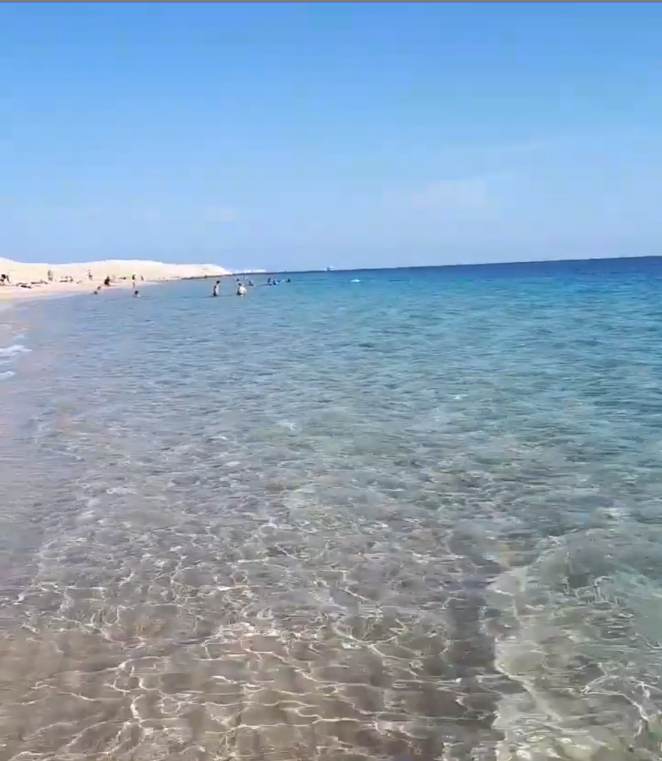 The Red Sea. The Red Sea. In the rush I was in I didn’t bring as many things as I should have, but still I walked in the Red Sea; it was the clearest water I have ever seen in my life and it was so peaceful to chill by the water and chat with other like-minded people from around the world. It was a very beautiful experience. We stayed until sunset, and what capped it off was watching the sun set over the water and the bay just as a full moon was coming up over the mountains of the Sinai Peninsula. I honestly didn’t even want to take a picture, because all I wanted to do was be in the moment and remember everything about it----The view, the wind, the smell of the sea, and how I felt at that moment. This was one of the most beautiful experiences I have ever had and it was totally worth bending the rules a little bit to get there. Nature and Culture Summit The serenity was short lived however. I had to get a good sleep for the next day, because I was presenting alongside my director on Indigenous Protected and Conserved Areas to everyone who attended the Nature and Culture Summit. It was nerve-racking but a very cool experience. Up until this time I had done a lot of public speaking. We gave a great presentation and I felt like a rock star (exaggeration) for a little bit before then heading back to the resort and chill by the pool (not an exaggeration). My mother says that I am like Forrest Gump, and for good reason. Early in this stay (about 3 weeks), I had woken up one day and had SO many bites on my arms and legs. I got super nervous and thought that it was due to bed bugs and I panicked. I still threw on my suit and went to the meetings, but I had showed my boss the bites and he cringed. I had asked him if I should go to the hotel and notify them, so he excused me for the evening. I had quietly asked for the manager and showed him the bites discretely so as not to start a panic at the resort. They had told me that they were mosquito bites and that there was no problem. I took their word for it because the mosquitos over there are quite different than ones here in Canada. The ones here buzz pretty loud, but the ones there were like little silent kamikaze mosquitos that you didn’t feel on your skin until later on when the bites started to itch. I was just about to turn out the lights and go to sleep, but the manager had ordered his guys to upgrade me to the nicest room in the resort that was beside the pool. My room was bigger than the Canadian headquarters room that we were using every day, and bigger than my last apartment. They also took all of my luggage and clothes to have them washed and dry cleaned---these guys took their jobs serious and didn’t even let me raise a finger. I had nothing on except for my shorts and a T-shirt and they drove me in a golf cart to my new room. The next day I had thanked the manager and told him it wasn’t necessary, but I was very thankful and absolutely appreciated it. For a couple weeks I got to live like the Pharaoh (exaggeration)---but this room had a huge TV on a swivel, a very nice living room, fridge that was constantly stocked with drinks, a King sized bed, a huge bathroom that was about 4-5 times the size of a normal hotel bathroom, a huge closet and wardrobe, laundry service, and my front door took me right beside the pool which was also huge, and next to the walkway that led to a little island bar in the middle of the pool. I now had the best room, and some of my friends there thought it pretty hilarious because I was one of the most junior people there. When I told people where I was going and what for, I know a lot of them thought it would be like a vacation to go to Egypt. The reality is the days were so long. I was usually working every day from when I woke up until I went to sleep. At certain points there are negotiations on important pieces that you are assigned to monitor, which can go early into the morning hours. The longest session I was in lasted for 11 hours straight, and this didn’t count the work I already did earlier in the day. What made up for those were some of the evenings and days off that we got to explore. I met a lot of new friends, and this was where I also met Kelsey, another founding member of CYBN, and member of the Canadian delegation. Being a part of this experience led to new friendships and an expanded network. Being a part of the Canadian delegation was the most fun experience I have had while working. In fact, it was actually so fun for me that I forgot I was working myself like a madman to do a good job. It also led me to the friends I made who had helped to create CYBN, and also be a part of other similar initiatives here at home in Canada. I began to really admire the people and the work that was put into what we did at COP-14, and the openness and inclusion for Indigenous Issues, which is why I was there. Besides the around the clock work, my typical day included waking up, meeting for breakfast, a Canadian delegation morning meeting/update, meeting with the Indigenous Caucus, attending the meetings I was assigned to throughout the day, and provide analysis, advice, and monitoring of my assignments. Evenings usually consisted of meeting for dinner with colleagues and friends at different spots, getting out for an adventure if your work for the day is done, and lots of nights ended with playing Uno cards with some of the delegates who kept destroying me (I didn’t win once). Also one of the funny stories is when I tried to take coffee for the day in my metal water bottle (there were no mugs, and coffee was a must). I quickly remembered that metal is a wonderful conductor of heat, and the coffee was honestly so hot whenever they made it, that it would be like lawsuit temperature hot here in Canada. I couldn’t even hold the bottle and kind of burnt my hand----I wasn’t able to drink it at all for like an hour and a half to 2 hours and I was dying from tiredness. Oh well. Winding it Down Many of the delegates and attendees didn’t stay for the entire 3 weeks, but I did. I was there 2 days before it started, and 1 day after it ended. As things were winding down at the end for some folks, mine were actually ramping up. I was assigned to the Post-2020 Framework, and to monitor all of the negotiations until the very end (it was the last thing to wrap up). I was able to go out one last night for dinner and shopping, where I bought gifts for people back home and back at work. One of the things that people forgot, and I also did at times, was that I still had a week of class attendance in Vancouver, B.C. for the legal portion of my MBA. It kind of gave me anxiety, but being so busy all of the time kept my mind off of it enough to be able to focus on the task at hand. If I had any time in the evenings, I would be reading and chipping away at assignments. I also watched a lot of James Bond movies because there was only one English channel and they were having a marathon. At the end of it all it was a great experience that changed my life and inspired me a great deal. If you are thinking about joining the Canadian Youth Biodiversity Network, I think you will find it rewarding in finding like-minded people that are passionate about working for the youth voice in Canada. Canada is one of the most unique countries, governance wise, in that there is such a diversity in geography, regional identities, legal jurisdictions, and Indigenous nations around the country. To put it in perspective, there are 3 territories, 10 provinces, and between 40-60 Indigenous language groups/nations across 634 First Nation communities, and the Inuit and Metis peoples, all with their own legal frameworks of operation which affect conservation policy implementation. Having the chance to have CYBN be a conduit for finding innovative ways to practice reconciliation in Canada would be a great attribute of CYBN, and has great potential for driving the Post-2020 Framework of the CBD. If you have questions feel free to reach out through social media and the website, and if I can I would love to help out! Everybody stay safe, and my best you and yours. I look forward to getting to know you all better as we grow. Peace and Love! Written by: Joseph Tootoosis
When I was told that I will be sent to work at an aquarium on the west coast of Vancouver Island, my mind was full of cold water diving and marine critters that I will find underwater. Nothing prepared me for the towering trees of the BC’s temperate rainforest that welcomed me. 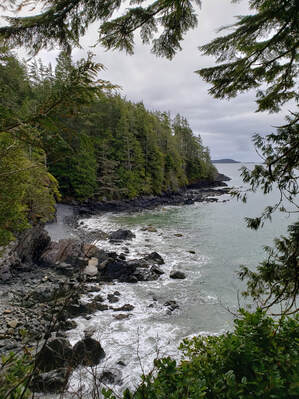 Before coming to Ucluelet, BC, I was under the impression that all rainforests are tropical, but the indoor terrestrial rainforest garden at the aquarium, educational signs along myriads of trails close to town, and free educational classes hosted by Raincoast Education Society and other local NGOs soon proved me to be wrong. This 800-year-old rainforest receives an average rainfall of 3.4 meters annually. Tall and straight Sitka Spruces grown up to 90 meters in height and shielding the rest of the forest from salt sprays of the waves. Large 1,000-year-old Western Red Cedars are "the cornerstone of Northwest Coast aboriginal culture". Western Hemlocks offer their young leaves as a tasty citrus-flavoured source of Vitamin C. When a tree falls, it becomes a Nursing Log where the decaying wood provides nutrients for young saplings while giving them a height advantage over saplings growing from the ground. 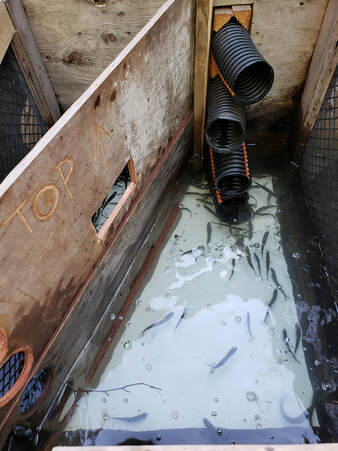 Salmons swimming through a trap where we counted and measured the population. Salmons swimming through a trap where we counted and measured the population. This forest is intrinsically connected to the ocean and my work as a marine biologist by the salmons. Salmons are anadromous: they are born in freshwater and live up to a year sheltered in the nutrient-rich streams of the rainforest; they then move out to the ocean where they mature and bring rich nutrients from the ocean back to their birth stream where they will spawn. When I am troubled, I like to go for a stroll in this amazing rainforest to listen to the birds, marvel at the life force of all its inhabitants, and wonder what wildlife I will find under the shadows next. By: Lisa Chen
Scrolling through the social media posts weeks into COVID-19 lockdown, I was elated by the news stories of how nature had hit a reset button.
“With a third of world’s population in lockdown, the animals are taking over”- read a post on Twitter. This is probably the first time in human history that billions of people are forced to spend time indoors and the wildlife seems to be reclaiming the places where the human activity has decreased. Dolphins, that typically kept away from the murky waters of Venice appear to have returned to the now clear waters of the canals. In Canada, people are spotting wild turkeys in east-end Montreal neighbourhoods. Throughout the southern Ontario, common urban species such as skunks, raccoons, white-tailed deer and foxes are being spotted more often since the pandemic lockdown began. Author: Yoko Lu I was travelling in Guatemala during the Christmas break of 2019 while I was doing an internship in Belize. Since it is a neighbouring country, I crossed the border on road without trouble. I took the bus from the capital Belmopan to Benque, a city right next to the border. Then I took the taxi to the border, then went through the immigrant control, and that’s it. There was no machine for scanning the passport – the passport was just passed to the officer, stamped, and returned to me. I was in Guatemala for 16 days, with some of these days being ‘stuck’ in Antigua because of no shuttle busses on holidays. Antigua is the main hub where there are various connections for long-distance shuttle bus travel. I could have taken chicken busses but that meant spending the whole day transiting in local busses which would stop at anywhere on the road where there were passengers who wanted to board or get dropped off. On one of those days, I went to Copan, Honduras from Antigua, to specifically visit a well-known Mayan archaeological site. There is one sculpture in the picture above that is slightly different from other objects. Can you guess which one? This sculpture is from Copan. BIODIVERSITY While most of these souvenirs are oriented towards tourists, they are nevertheless connected to biodiversity and nature. The two masks, for example, represent the Mayan history and wildlife. I am guessing what the orange mask with cheetah-like design may represent, but as I was netsurfing through the Internet, I would say that it is a margay. It resembles an ocelot, but with smaller body, longer legs, and tail. Margays are monkey-cats that thrive in trees. They reside in Central and South America. Conservation-wise, margay (Leopardus wiedii) was widely hunted illegally for wildlife trade, until the 1990s. The animal is listed as Near Threatened (NT) on the Red List of International Union for Conservation of Nature (IUCN). In terms of the recent issues, its population is believed to be declining due to habitat loss, specifically deforestation, as the cat relies on the forest for survival. Other threats are: illegal pet trade, killing for poultry protection, and low reproductive rate. Currently, the cat is fully protected; however, in Ecuador, Guyana, and El Salvador, its protection status is not set. There is a high probability that the margay will be listed as vulnerable in the future. Status and abundance of the animal is poorly known; therefore, more research is necessary. Source: iNaturalist MAYA While the wildlife – flora and fauna – is the primary focus for biodiversity, Mayan culture is important as well. Tikal, for example, is one major archaeological site in Guatemala, and it is also along the border crossing between Belize and Guatemala. Tikal was the first destination I went after entering Guatemala through Belize. Tikal can be reached from Antigua via flight as well. Selva Maya is a forest region that covers Belize, Guatemala, and Mexico. It is the largest rainforest in Mesoamerica, which ranges from Central Mexico to northern Costa Rica. Within the Selva Maya, there are 20 unique ecosystems that make up different categories of protection, including National Parks, Forest Reserves, and Biosphere Reserves. Tikal itself is dated to being 600 B.C. and A.D. 900, flourishing as an ancient city that consists of over 20 major pyramids. This means that ever since ancient times, ancient people have been utilizing the nature for survival, and used nature as a religious form of worshipping the nature gods. It is thought that there were at least 166 deities, known as the Mayan pantheon. Within the pantheon, some religious figures included animals of Maya, relating to biodiversity being important in both ancient and modern times. For example, the Jaguar Sun God refers to: “Almighty God the Sun dwells in the highest levels of heaven. When he traces the path of the sun across the sky in the daytime, his name is Kinich Ahau. When the sun falls into the West Door and enters the Underworld, he becomes the fearsome Jaguar God.” Tikal Temple I is known as the Temple of the Great Jaguar, as shown as the highest temple in Tikal (left, image below). Another animal god, called Itzam-Yeh, the Celestial Bird, is represented as the Serpent Bird or Seven-Macaw. Four corners of the world are associated, with the world represented as the temple, creating the summit of the sacred temple. Link: Air Pano (Can be viewed as 360° panorama view by scrolling the mouse) OTHER There are two music instruments that are visible in the assemblage of souvenirs: flute and shaker (placed right of the flute). They are not directly connected to the biodiversity, but they are well-represented as Mayan (or Guatemalan) music culture. There is a band of crafted dolls in front of larger objects. These reflect the unique Guatemalan textile style as well as relation to the social culture. Below the band are two belts. I am not sure what the design means, but I was so fascinated by the designs, I decided to purchase in addition to my collection of souvenirs. Below all the objects placed on the table, there lies a blanket. This is not a blanket; it is a poncho. I have always wanted to be part of the nature and culture; therefore, I was fortunate to have bought it. P.S. I ran out of space, so I ended up buying an extra luggage in Mexico City to hold all these souvenirs, on my way back to Belize. I carried all these souvenirs on my latter half of the trip, through most of those days, I stayed in Antigua. I was not planning to go to Mexico City, but I had to, because of passport stamp problems (I couldn’t go to El Salvador nor return to Belize via Guatemala – I had to go back to Belize via Mexico or the U.S.). TRAVEL TIP: If you end up traveling to Antigua, and if you wish to buy souvenirs, Nimpot (Nim Po’t) is the best place to buy souvenirs because their prices are set as minimal. If you buy on the street or at any other stores, the prices are typically much higher, as much as twice the price you find in Nimpot. Dr. Qinq Li talks about the benefits of the forests in his article Forest Bathing: How Trees Can Help You Find Health and Happiness. He starts by describing the experience of being immersed in nature, “the sounds of the forest, the scent of the trees, the sunlight playing through the leaves, the fresh, clean air — these things give us a sense of comfort. They ease our stress and worry, help us to relax and to think more clearly. Being in nature can restore our mood, give us back our energy and vitality, refresh and rejuvenate us.” Indeed, if you have ever felt like being in the outdoors and near nature has healing qualities, you are not alone.
In Japan, there is a term for spending time in nature and its “something called forest bathing, or shinrin-yoku. Shinrin in Japanese means “forest,” and yoku means “bath.” So shinrin-yoku means bathing in the forest atmosphere, or taking in the forest through our senses.” This experience is not about going hiking or jogging; it is merely about being in nature and connecting our minds to the experience. It is about smelling the forest, touching the earth, and tasting the air. While we can be very busy with our daily chores and activities, make sure you spend time in nature. SO, how does one go about forest bathing?
Forest Bathing: How Trees Can Help You Find Health and Happiness Hardcover 2018 by, Dr. Qing Li The Little Book of Forest Bathing: Discovering the Japanese Art of Self-Care by Andrews McMeel Publishing By: Laura Gaitan |
AuthorWrite something about yourself. No need to be fancy, just an overview. Archives
October 2021
Categories |
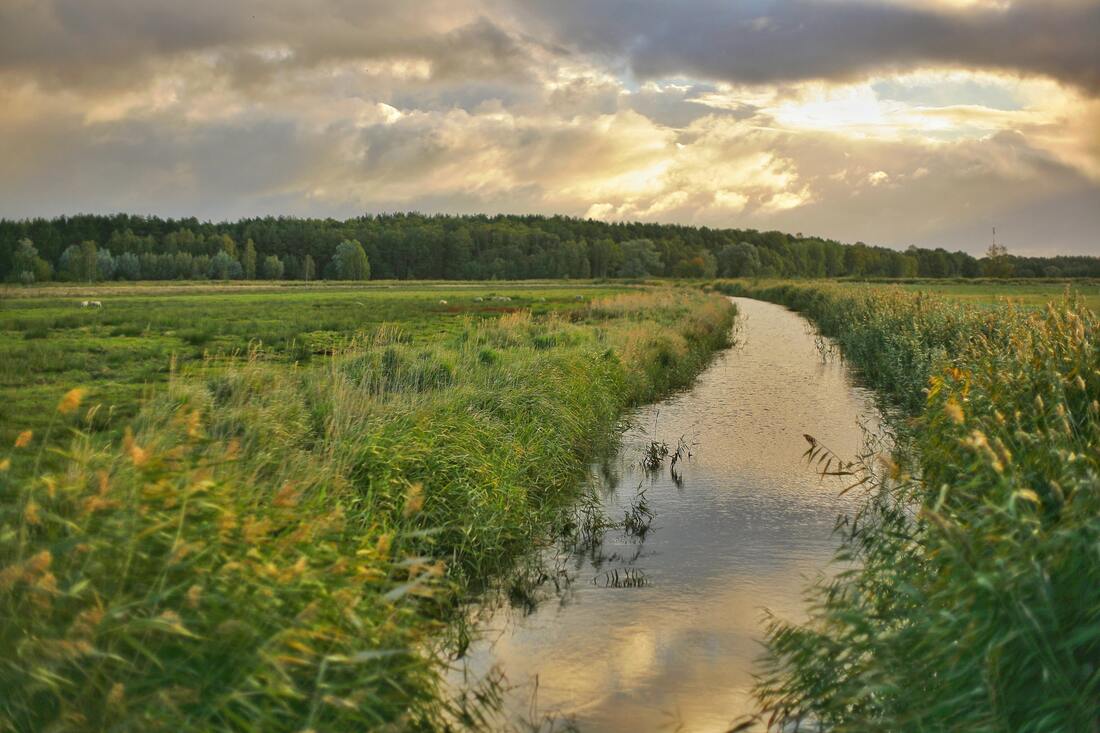
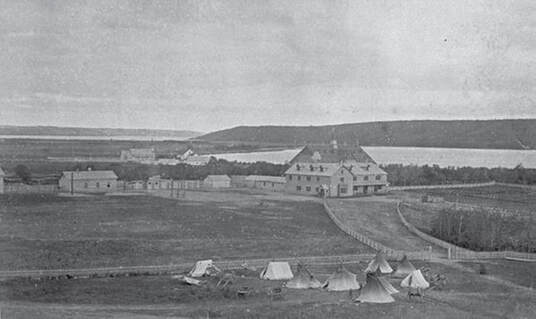
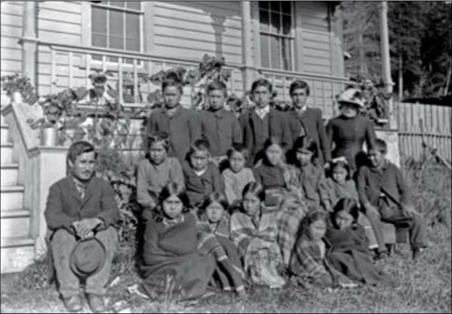
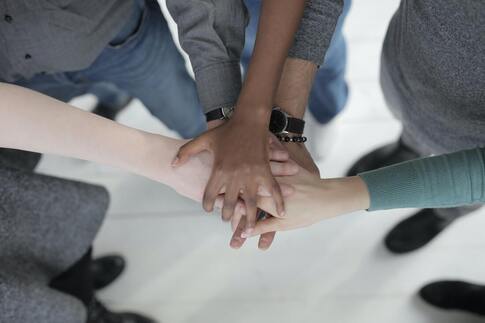
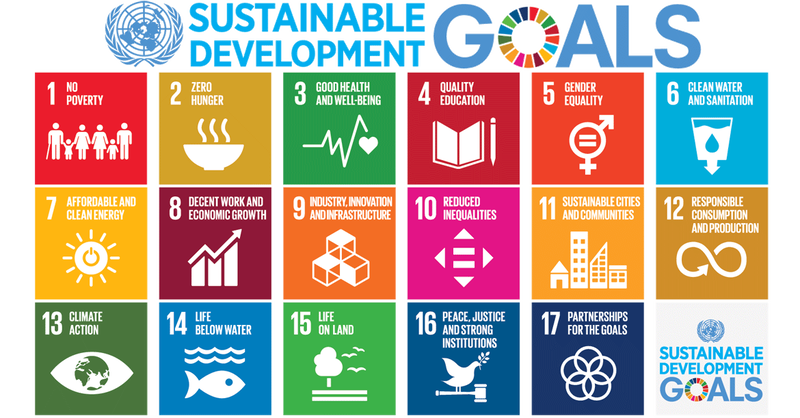
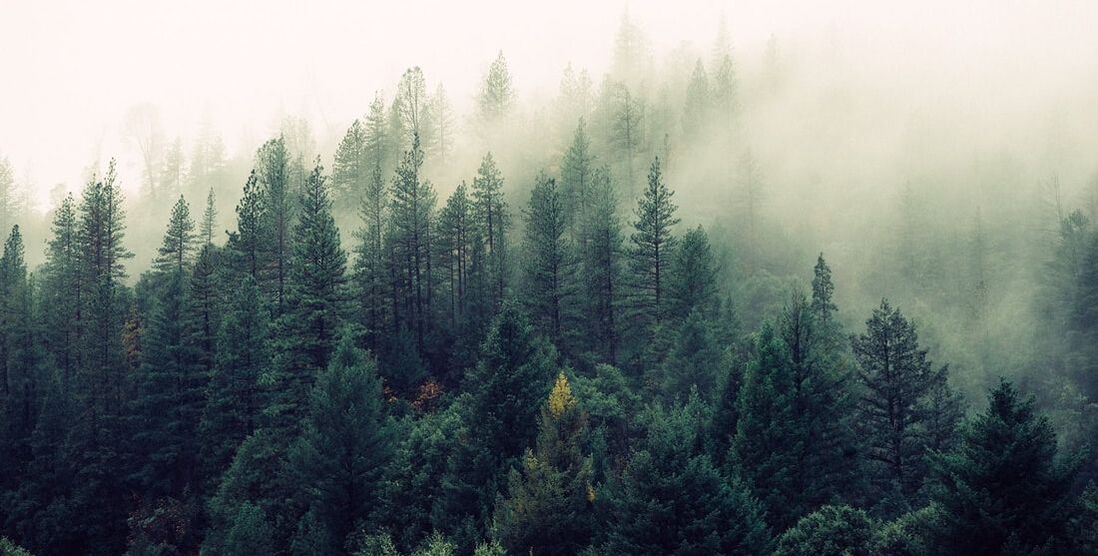
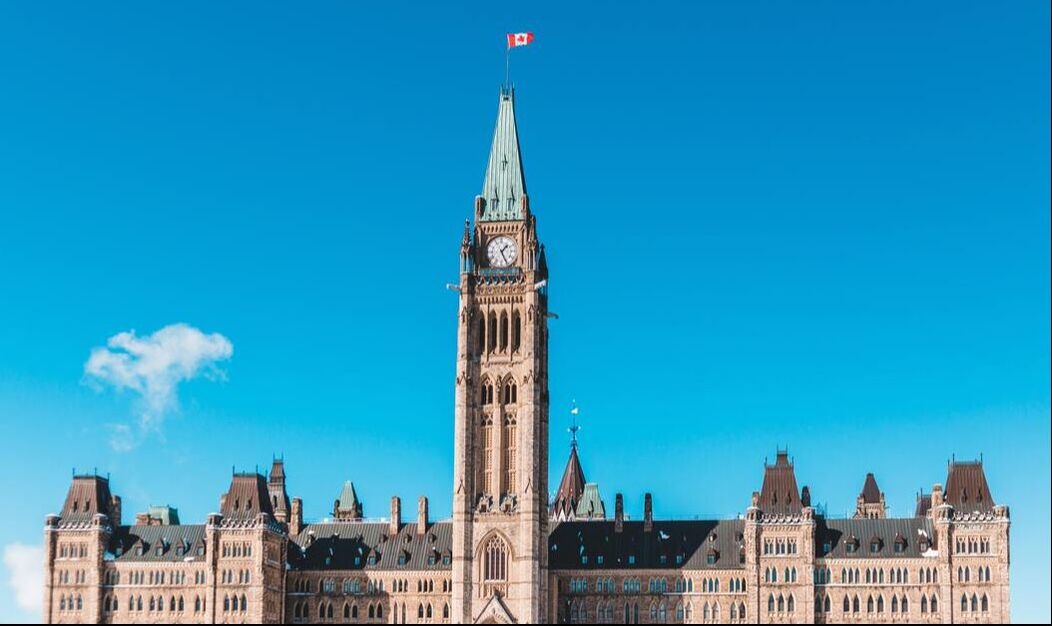
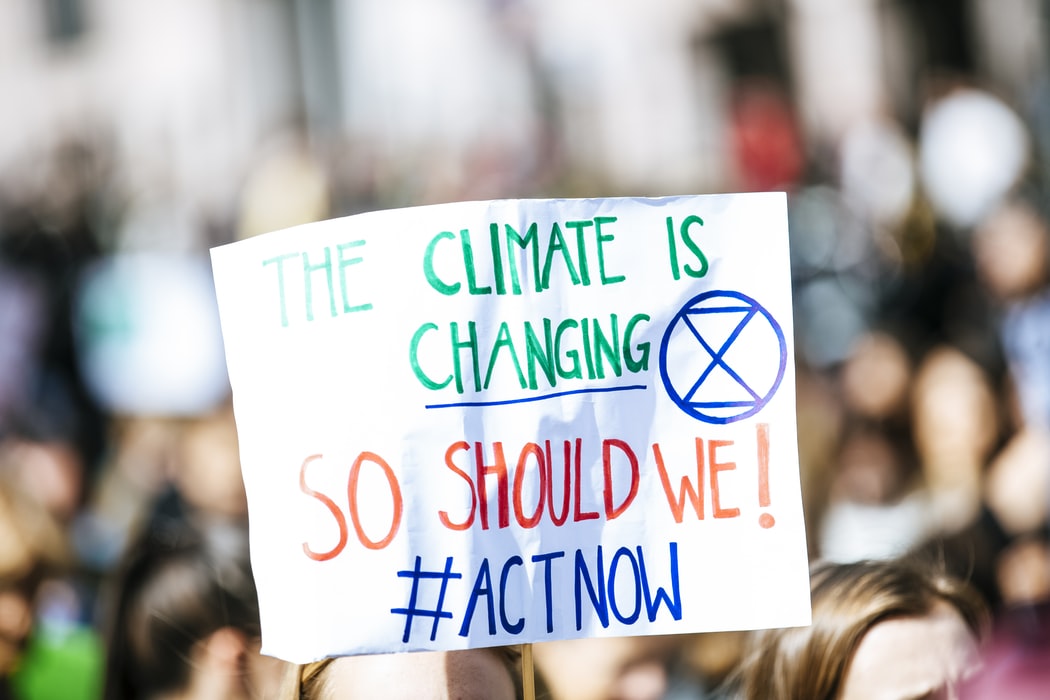
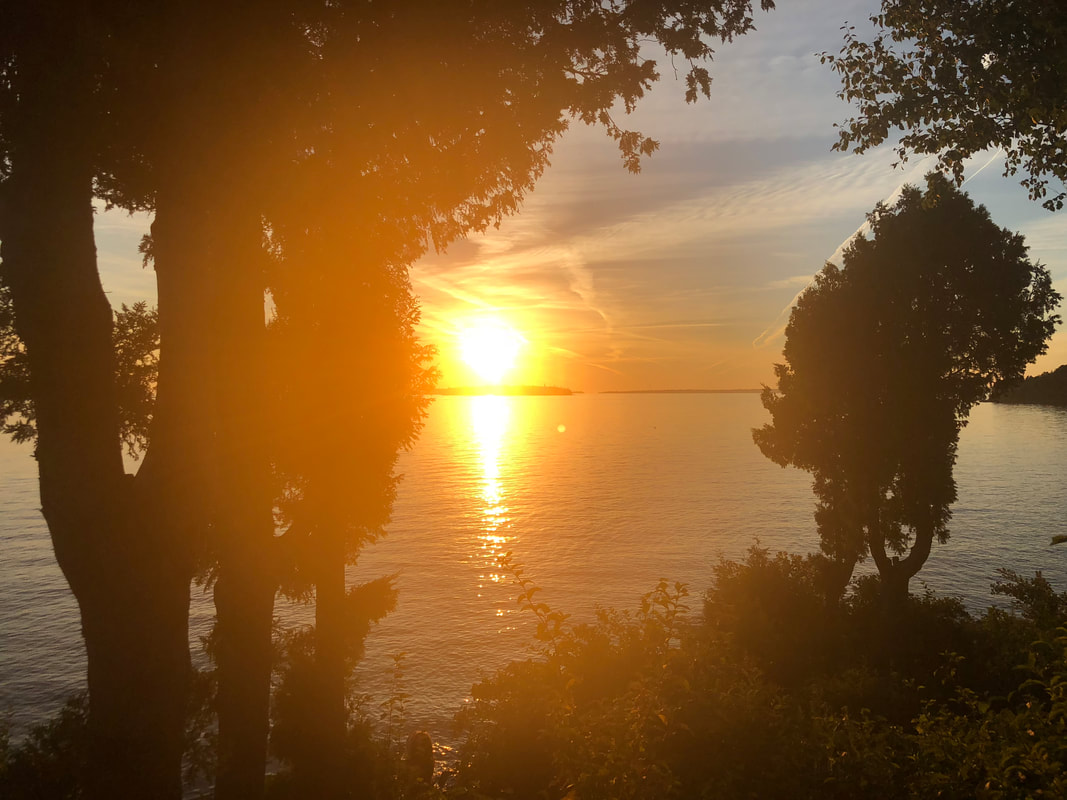
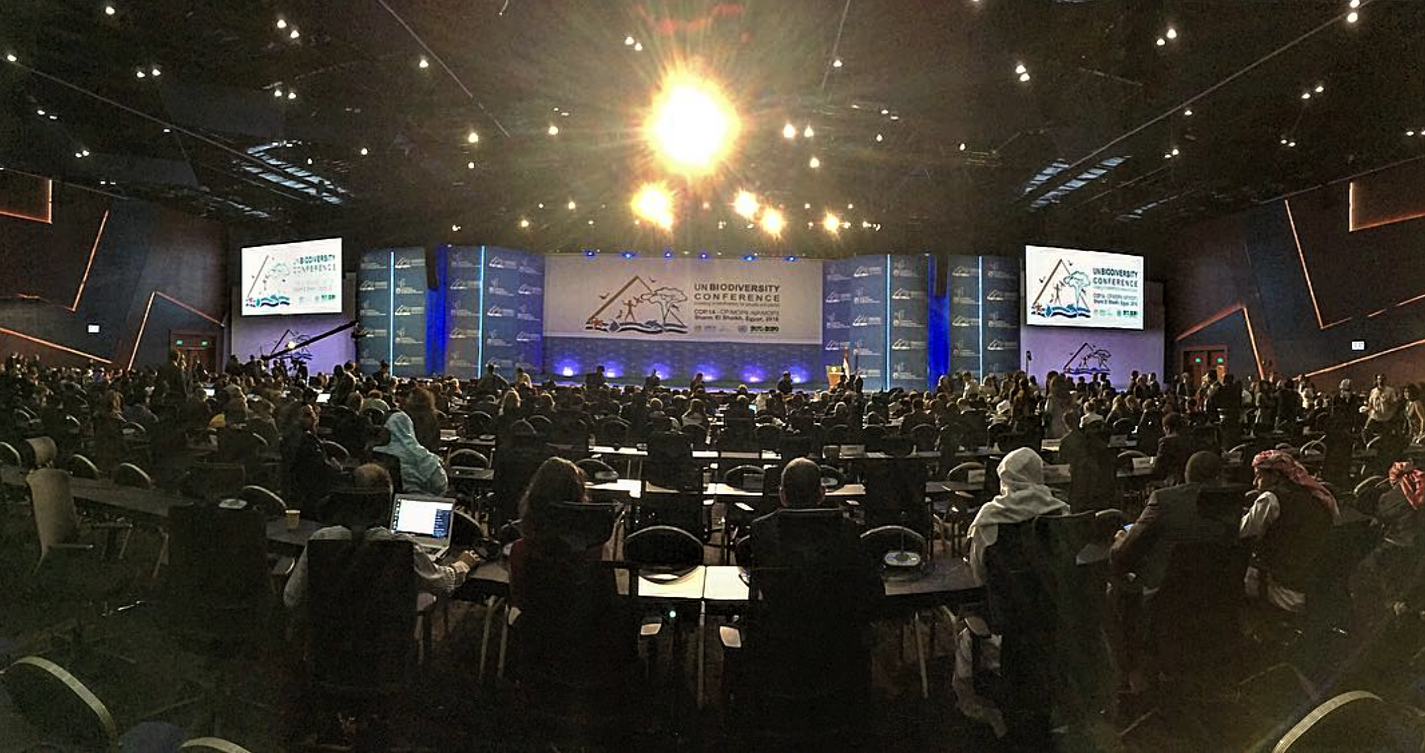
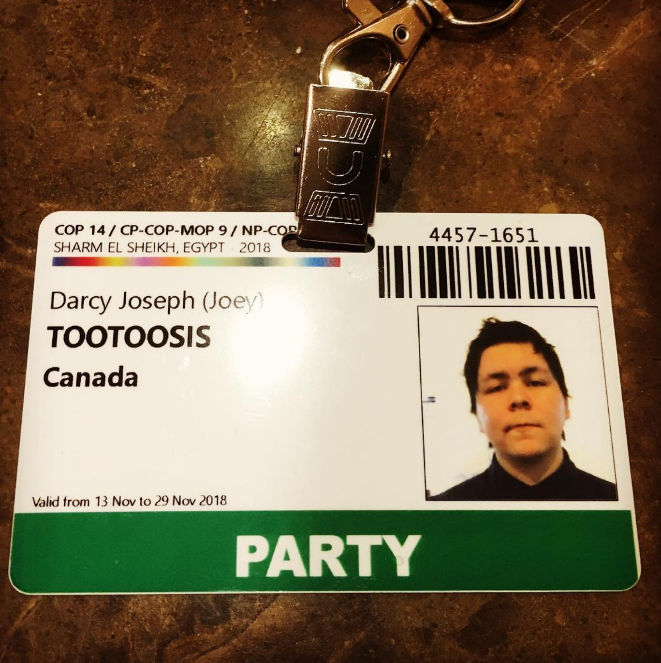
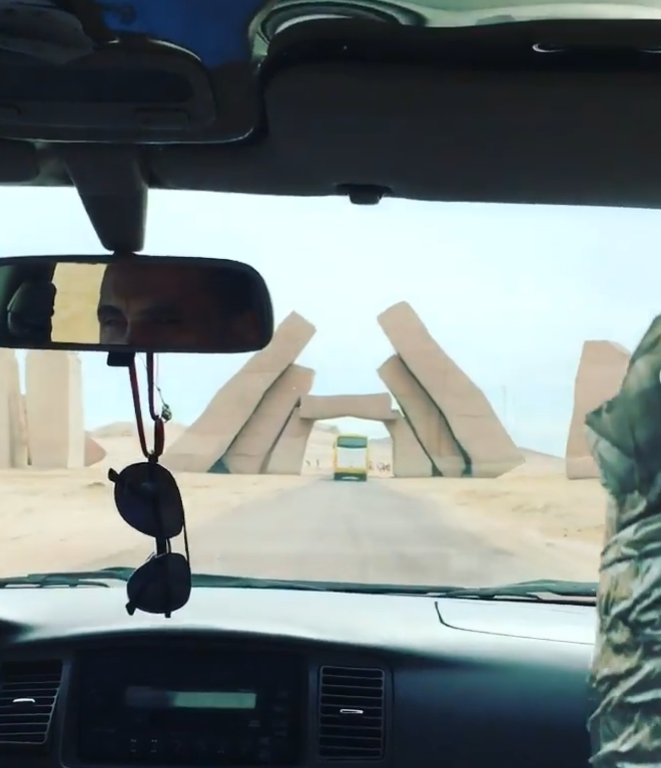
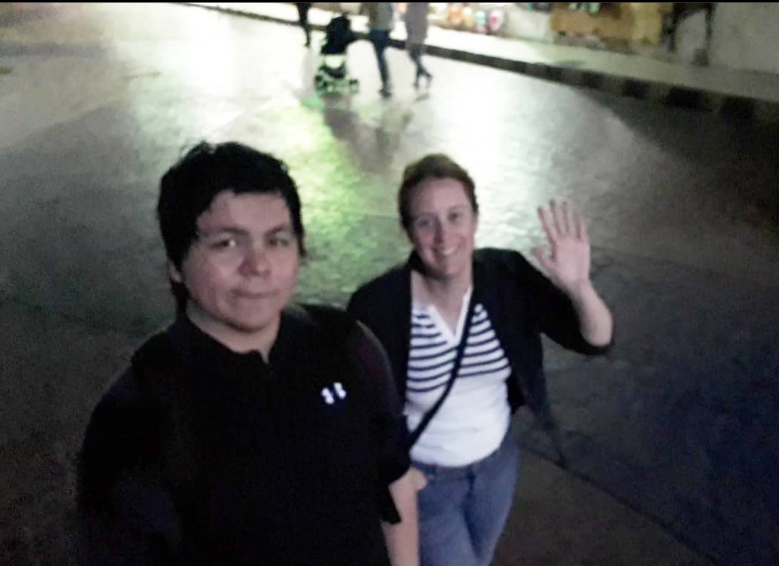
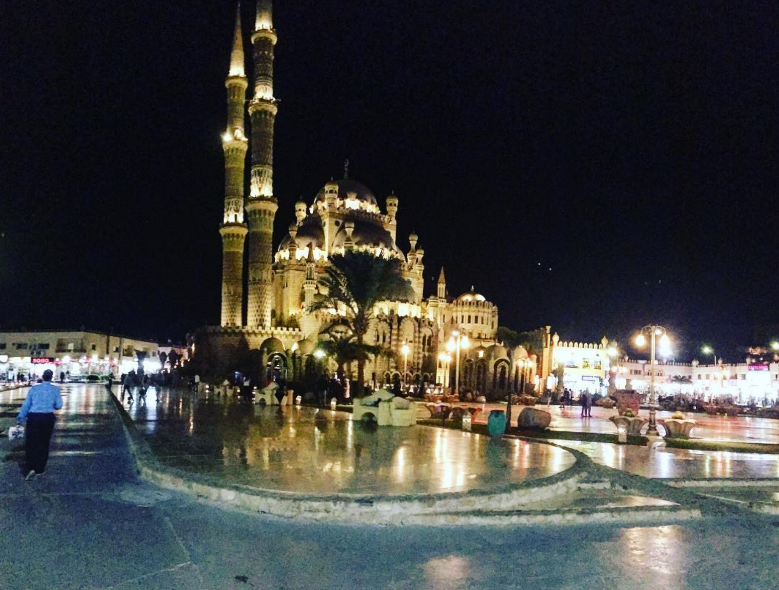
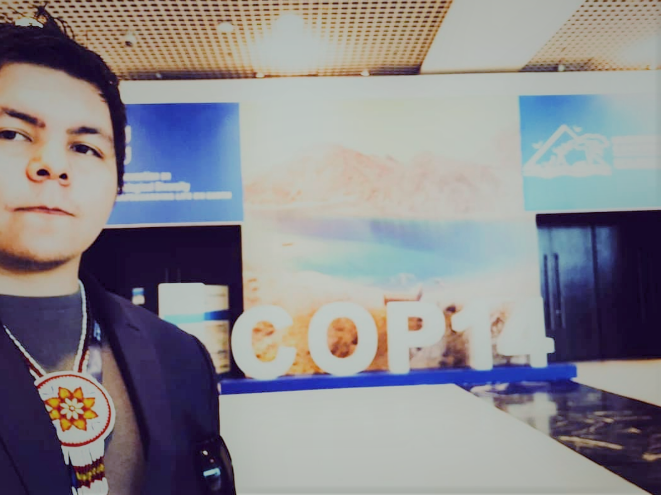
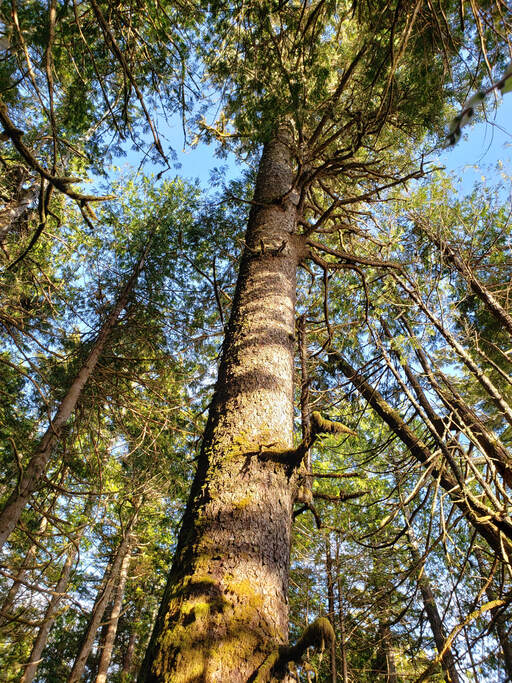
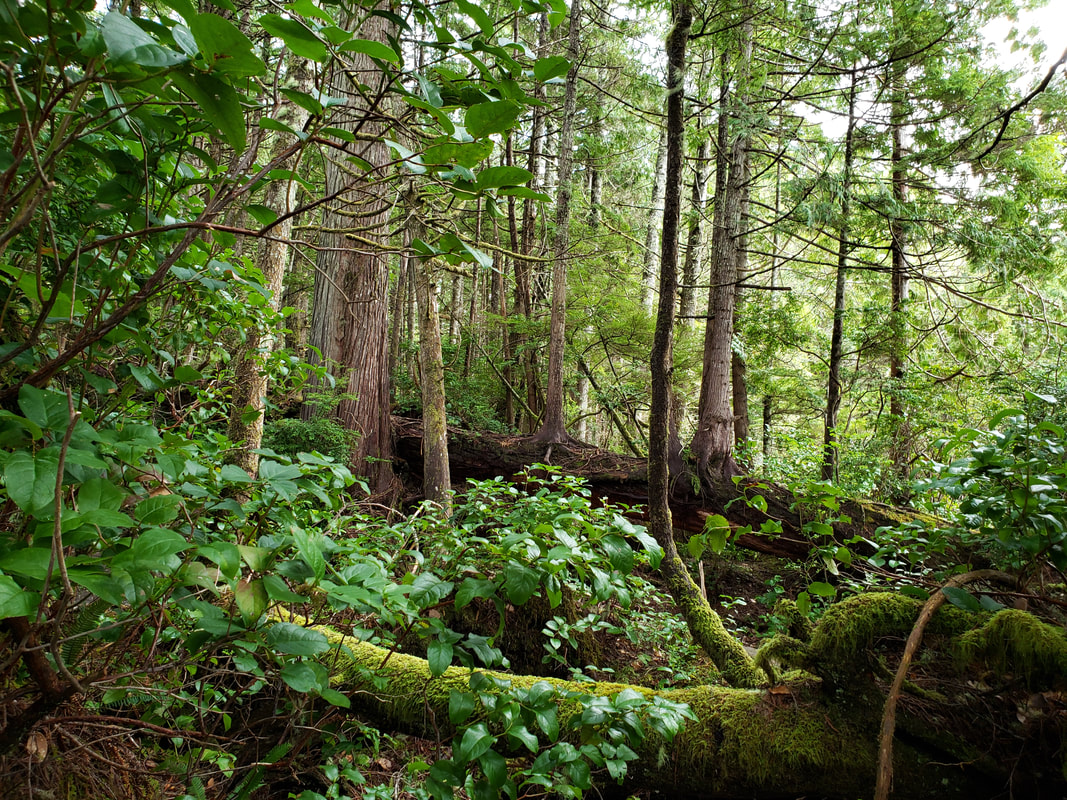
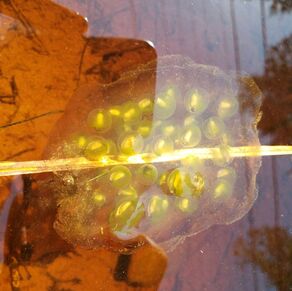
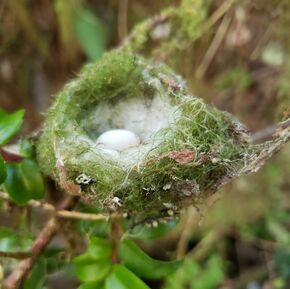
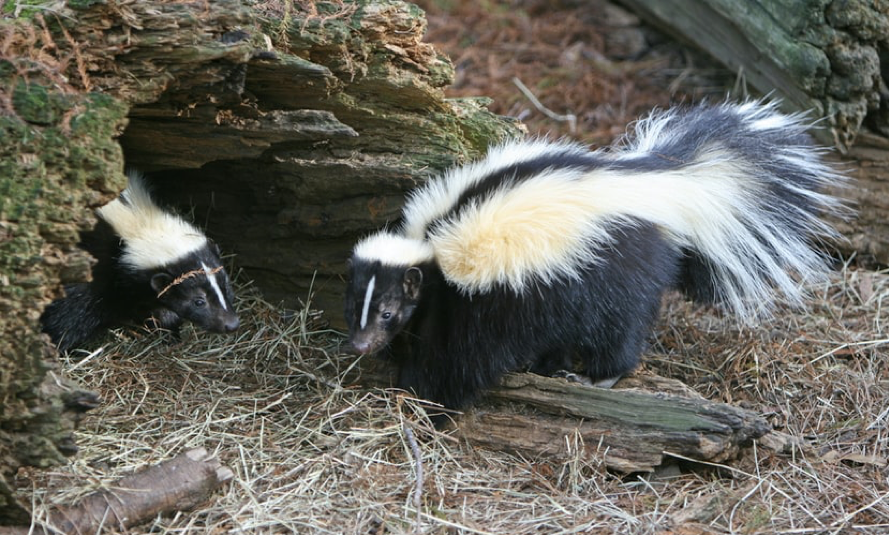
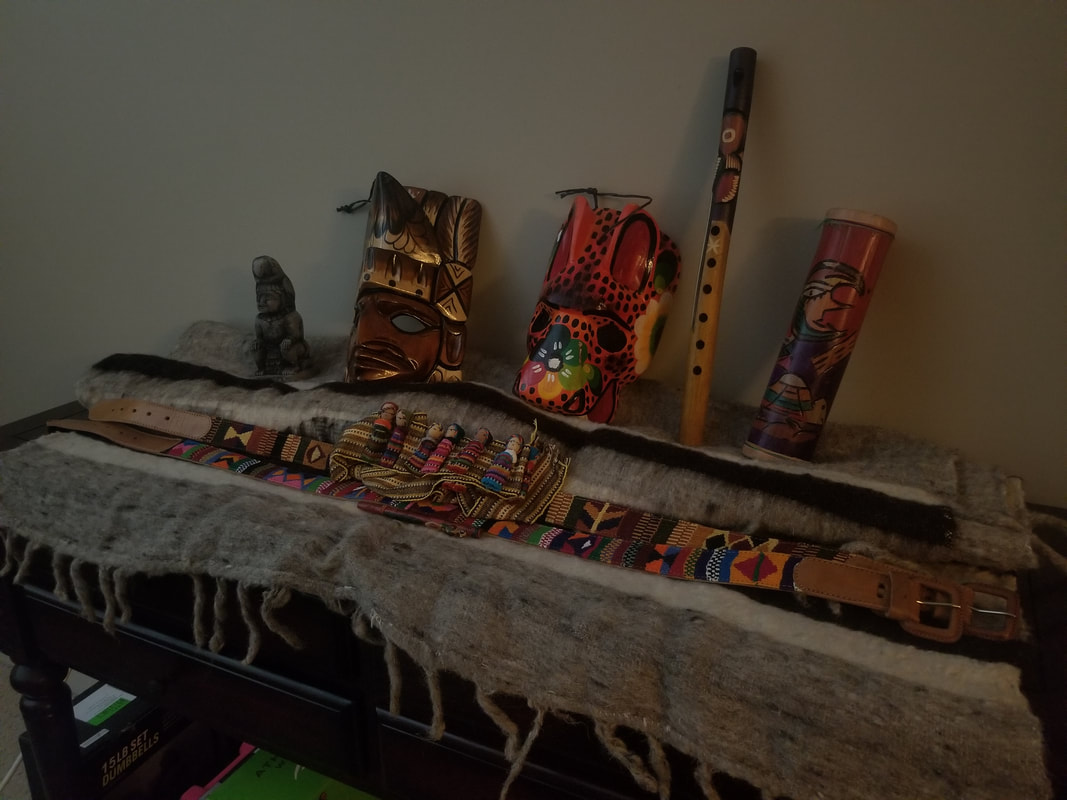
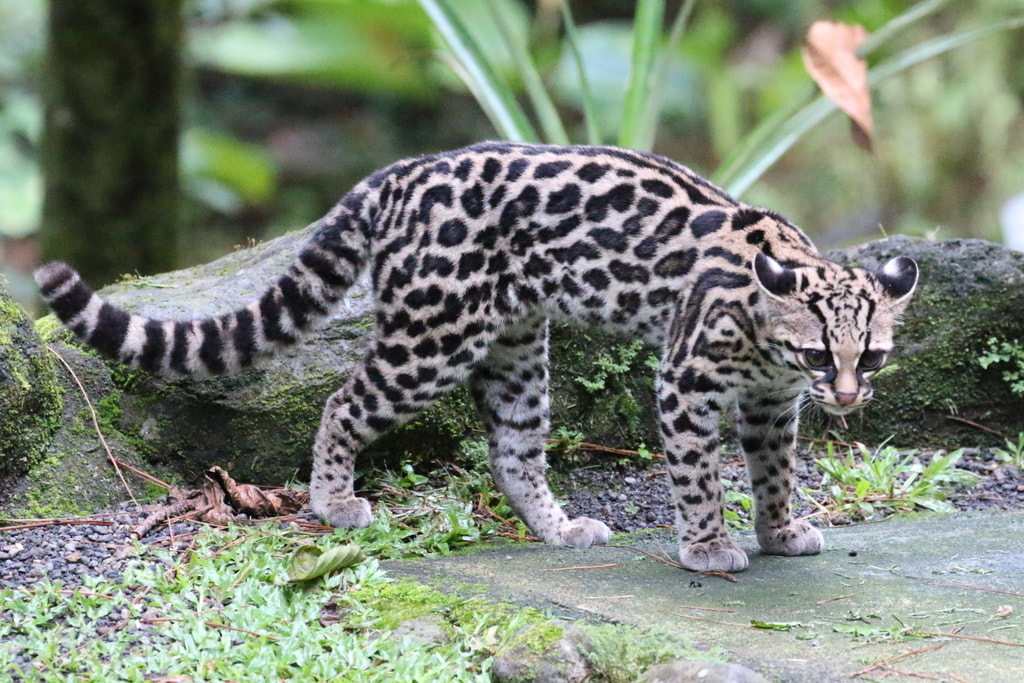
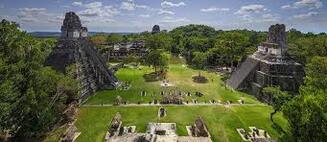
 RSS Feed
RSS Feed